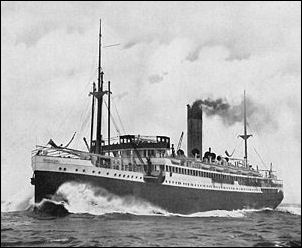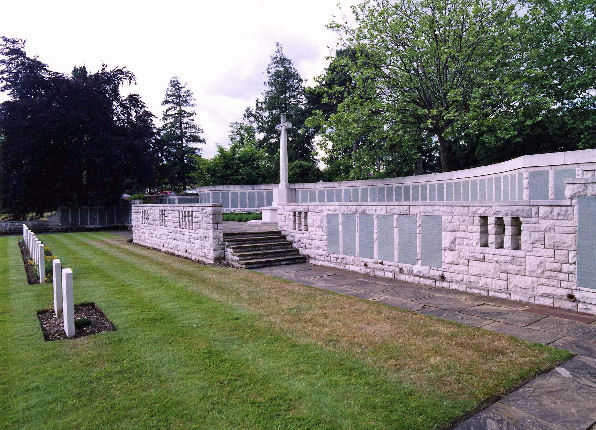Medal card : Pte. - 25th London Regt.
Medal roll : 25th London R.
Pte., Attached Infantry Base Depot 1(a) France 21.7.17 to 8.8.17.,
Posted to 10th London R. 1(a) France 9.8.17 to 2.8.18.
|
Frederick was dorwned at sea in the incident described
below.
The HMAT Warilda (His Majesty's Australian Transport) was a 7713 ton vessel, built by William Beardmore and Company in Glasgow as the "SS
Warilda" for the Adelaide Steamship Company.[2] She was designed for the East-West Australian coastal service, but following the start of the First World War, she was converted into a troopship and later, in 1916, she was converted into a hospital ship.
On 3 August 1918, she was transporting wounded soldiers from Le Havre, France to Southampton when she was torpedoed by UC-49, a German submarine.[8] This was despite being marked clearly with the Red Cross; as with a number of other hospital ships torpedoed during the war, Germany claimed the ships were also carrying arms.[9]
The ship sank in about 2 hours, and of the 801 persons on board, a total of 123 lives were lost
[Acknowledgments to Wikipedia] |

|
'Soldiers Died in the Great War 1914-19' under the heading "25th (County of London) Battalion (Cyclists)" :-
Benton, Frederick, born Islington, resident Westminster,
enlisted Fulham, 742337, Rifleman; died at sea 3 Aug 1918.
In Memory of
Rifleman Frederick BENTON
742337, 25th Bn., London Regiment (Cyclists) posted to 2nd/10th Bn., London Regiment
who died on 03 August 1918
Remembered with honour Hollybrook Memorial, Southampton.

Commemorated in perpetuity by
the Commonwealth War Graves Commission
The Hollybrook Memorial commemorates by name
almost 1,900 servicemen and women of the Commonwealth land and air forces*
whose graves are not known, many of whom were lost in transports or other
vessels torpedoed or mined in home waters (*Officers and men of the
Commonwealth's navies who have no grave but the sea are commemorated on
memorials elsewhere). The memorial also bears the names of those who were
lost or buried at sea, or who died at home but whose bodies could not be
recovered for burial. Included are HMTs Donegal and Warilda, ambulance
transports torpedoed and sunk between
Le Havre
and
Southampton
on 17 April 1917 and 3 August 1918. The memorial was designed by T. Newham
and unveiled by Sir William Robertson on 10 December 1930.
The Hollybrook Memorial is situated in
Southampton (Hollybrook) Cemetery behind the plot of First World War
graves near the main entrance. The cemetery is located off
Tremona Road
, opposite the general
Accident & Emergency
Hospital
. From junction 5 of the M27, take the A35 (
Burgess Road/Winchester Road
) and follow the signs for the general hospital.
[Courtesy of
Commonwealth War Graves Commission]
|